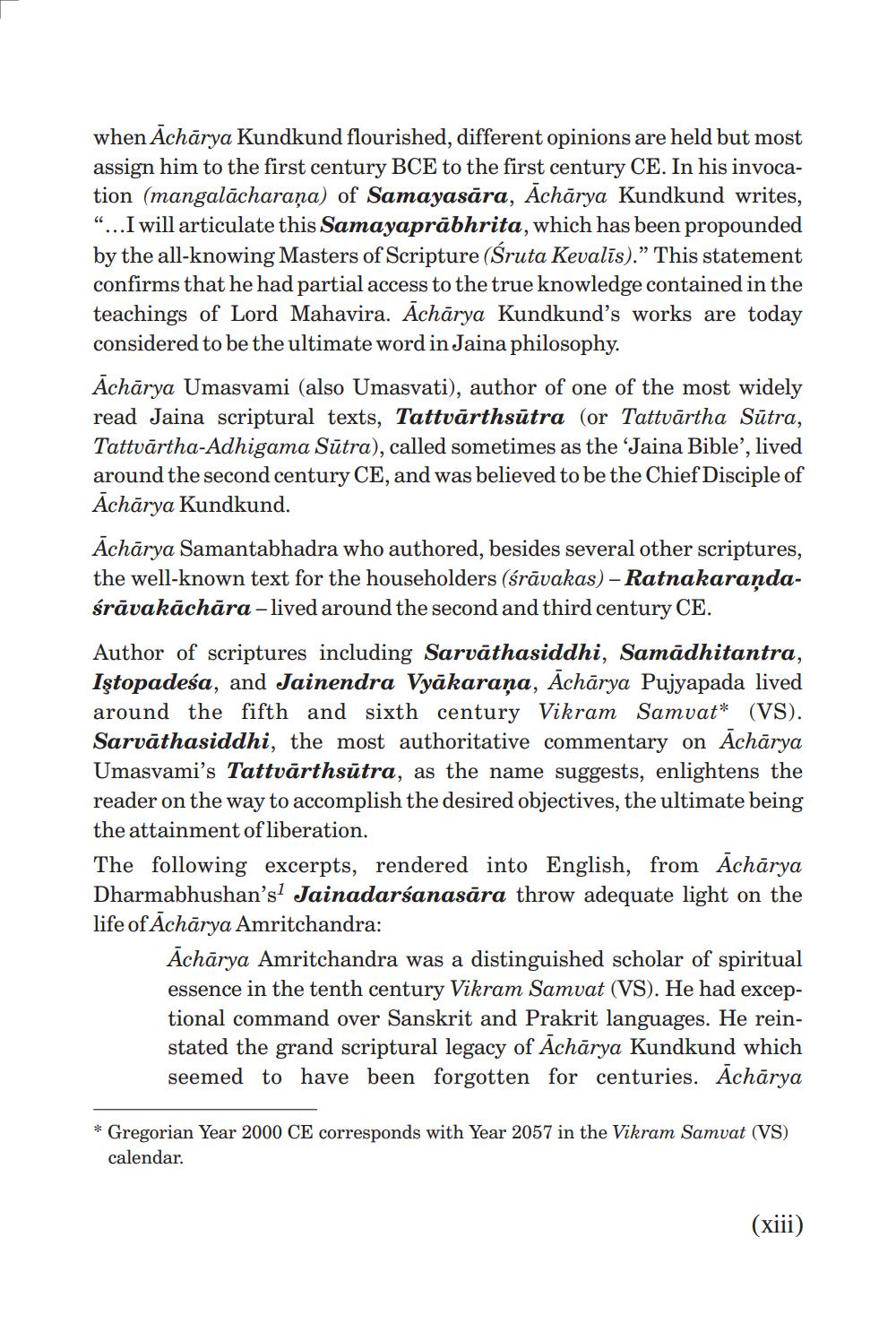________________
when Acharya Kundkund flourished, different opinions are held but most assign him to the first century BCE to the first century CE. In his invocation (mangalacharana) of Samayasāra, Acharya Kundkund writes, "...I will articulate this Samayaprabhrita, which has been propounded by the all-knowing Masters of Scripture (Śruta Kevalis)." This statement confirms that he had partial access to the true knowledge contained in the teachings of Lord Mahavira. Āchārya Kundkund's works are today considered to be the ultimate word in Jaina philosophy.
Acharya Umasvami (also Umasvati), author of one of the most widely read Jaina scriptural texts, Tattvarthsūtra (or Tattvärtha Sūtra, Tattvartha-Adhigama Sutra), called sometimes as the 'Jaina Bible', lived around the second century CE, and was believed to be the Chief Disciple of Acharya Kundkund.
Acharya Samantabhadra who authored, besides several other scriptures, the well-known text for the householders (śrāvakas) -. Ratnakarandaśrāvakachāra - lived around the second and third century CE.
Author of scriptures including Sarvathasiddhi, Samadhitantra, Iştopadeśa, and Jainendra Vyakaraṇa, Āchārya Pujyapada lived around the fifth and sixth century Vikram Samvat* (VS). Sarvathasiddhi, the most authoritative commentary on Acharya Umasvami's Tattvärthsūtra, as the name suggests, enlightens the reader on the way to accomplish the desired objectives, the ultimate being the attainment of liberation.
The following excerpts, rendered into English, from Acharya Dharmabhushan's1 Jainadarsanasara throw adequate light on the life of Acharya Amritchandra:
Acharya Amritchandra was a distinguished scholar of spiritual essence in the tenth century Vikram Samvat (VS). He had exceptional command over Sanskrit and Prakrit languages. He reinstated the grand scriptural legacy of Acharya Kundkund which seemed to have been forgotten for centuries. Acharya
* Gregorian Year 2000 CE corresponds with Year 2057 in the Vikram Samvat (VS) calendar.
(xiii)




